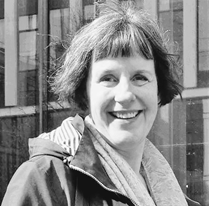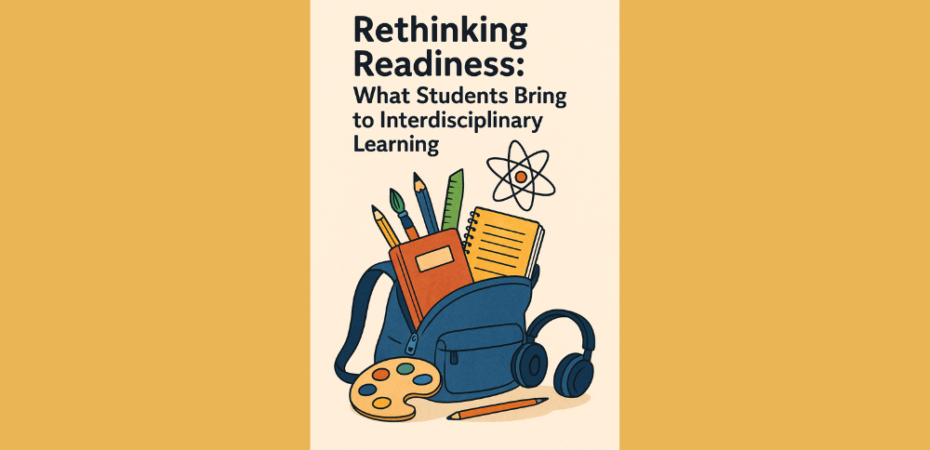
This is post two in a five-part conversation, ‘Interdisciplinarity, reform, and the future of the University’, between Anthony Skerik and Professor Sabine Rolle around the promise and pressure of interdisciplinary education at the University of Edinburgh. In this second post, we pick up the conversation where we left off – shifting focus to the students themselves. As more learners arrive at University with interdisciplinary and project-based backgrounds, programmes like Interdisciplinary Futures are adapting to support both seasoned and first-time interdisciplinarians. In this post, Sabine unpacks how Edinburgh Futures Institute (EFI) is navigating this mix—and what it reveals about broader educational trends. This post belongs to the ‘Navigating complexity through interdisciplinary teaching and learning‘ Hot Topic series.
The Conversation..
Anthony: Picking up from our earlier discussion about institutional structures, I’d like to shift the focus now to students—specifically, where they’re coming from before university. With the rise of project-based learning and reforms, like the proposed Scottish Diploma of Education, it seems like more students are arriving with interdisciplinary experience already under their belts. How is the Interdisciplinary Futures programme responding to this shift?
Sabine: There’s a lot packed into your question, so it might help to take it in parts. One key point you raise is that many students are now arriving at university with a more interdisciplinary and project-based background—something we’re definitely starting to observe. In our undergraduate programme at EFI, we’ve seen a number of students coming from educational systems that already embrace a cross-disciplinary ethos. This includes international students who’ve attended high schools that structure learning in broader, more integrated ways than is typically the case in the UK.
We’ve also recruited many students from within the UK who completed the International Baccalaureate as their school-leaving qualification. That background gives them exposure to a wider variety of disciplines and project-based approaches. In Scotland, elements of this can also be found in the Curriculum for Excellence, which places a formal emphasis on interdisciplinarity and hands-on learning. How widely that’s implemented in practice is another question, but the intent is certainly there.
Interestingly, when we designed our programme, we didn’t anticipate how much this type of student would be drawn to it—so it’s been rewarding to see that those who are already excited by interdisciplinary learning are actively choosing to continue that journey at university. Of course, these students are now engaging with that same kind of thinking, but at a more academically advanced level. That’s where our programme really adds value: it deepens and challenges the interdisciplinary instincts they’ve begun to develop.
That said, we also continue to see a significant group of students whose prior education has been much more specialised. Many who come through the English or Scottish school systems, for example, are often required to narrow their focus to just two, three, or four subject areas by the time they reach A-levels or Highers. So for them, the interdisciplinary approach we offer can be quite new—and possibly even a bit daunting at first. These students may not have had many opportunities to think across disciplinary lines before arriving at university.
In effect, we’re catering to two broad types of learners: those with a background in interdisciplinary and project-based learning, and those for whom this is a relatively new experience. Both groups engage with our programme in different ways, and ideally, they learn from one another. That exchange—of perspectives, methods, and learning styles—is something we really value and try to facilitate.
Anthony: Building on that, do you see any noticeable differences in how these two groups—those with interdisciplinary backgrounds and those coming from more specialised education—show up in the classroom? Whether in terms of how they approach learning, interact with peers, or even how confident they feel in this kind of environment?
Sabine: I wouldn’t say I’m able to identify any consistent patterns just yet, mainly because the degree is still quite new. As you know—though your blog readers might not—we’ve only had two year groups so far. The programme began just a couple of years ago, so we currently have a first-year and second-year cohort, totaling around 70 students. While that’s a healthy size, it’s still too small to draw any firm conclusions about broader trends or correlations.
Right now, it’s more about individual differences. Each student brings their own unique background, personality, and way of engaging with the course material and with each other. So I’d be very hesitant to make claims about how prior educational experiences—like project-based or interdisciplinary learning—specifically influence their engagement or success. It’s not that these elements aren’t influential, but it’s difficult to disentangle them from personal traits and wider experiences.
That said, what we are seeing—and what’s becoming increasingly clear as the programme evolves—is how much unlearning some of our students need to do. Many come in with very fixed expectations of what university and a degree should look like. They’ve been deeply conditioned—sometimes explicitly—through schooling, family, and society to think about education in a particular, often discipline-bound, way.
One student put it quite starkly by asking, “Is this even a real degree?” And while that was a challenging question to receive, it also opened up an important conversation. What does that student—or others who may feel similarly—understand a “real” degree to be? My guess is that their idea of legitimacy is rooted in traditional academic disciplines, reinforced both at school and in the broader educational culture.
That mindset isn’t unique to students, either. It mirrors the way many of our colleagues also think—it’s a shared frame of reference. So part of what we try to do in the programme, especially during the first year, is help students expand or even rethink their conception of what a degree can be, and why a programme like this one is not only valid but necessary for the kinds of complex futures they may face.
So while we do hear concerns, I’d say they reflect broader social and institutional norms rather than just the type of school students attended. And helping students navigate and critically reflect on those assumptions is a vital part of what we’re doing in Interdisciplinary Futures
Anthony: That’s such an important point—interdisciplinary learning challenges more than just subject boundaries; it pushes against students’ expectations of what university is supposed to be. Let’s pick up there next.
Next time in Part 3…
Anthony: This conversation reveals just how diverse students’ starting points can be—and how crucial it is to design a programme that supports both continuity and discovery. For some students, Interdisciplinary Futures feels like a natural progression from a broad and exploratory school experience. For others, it’s a complete departure from the subject-specific silos they’ve grown used to. EFI’s job, as Sabine describes it, is to meet both kinds of learners where they are—while also encouraging them to unlearn limiting assumptions about what a degree “should” look like.
As we continue this series, we turn from the question of where students come from to one of where they find themselves: navigating legitimacy, scepticism, and institutional expectations in a programme that dares to do things differently.
 Anthony Skerik
Anthony Skerik
Anthony Skerik is a student at the University of Edinburgh and a member of the inaugural Interdisciplinary Futures class of 2027. His work explores how interdisciplinary thinking can be applied to real-world challenges, with a particular interest in conflict, innovation, and co-creation. He has held multiple positions within the University’s Information Services Group (ISG), supporting projects that bridge technology, communication, and education. As a co-editor of the Navigating Complexity: Preparing for the Future through Interdisciplinary Education blog series, he is committed to highlighting student perspectives and documenting the evolving landscape of interdisciplinary learning.
 Sabine Rolle
Sabine Rolle
Sabine Rolle is based in the Department of European Languages and Cultures (LLC) but currently does all her teaching through EFI, on the MA (Hons) Interdisciplinary Futures and the electives offered by EFI to students from across the university. Her strong interest in interdisciplinary education is also put to use in the role she plays leading on the development of cross-School Challenge Courses, as part of the Curriculum Transformation Programme and the implementation of the Learning and Teaching Strategy 2030.


